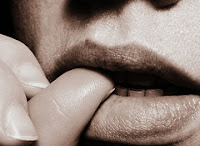
Years ago, I coached sales teams and executives on how to make more effective presentations to customers. I developed a Quick Tip Card (see picture and double-click on it) no bigger than a normal business card. This little card served as a client's pocket reminder of the key points covered in our coaching session. Many lives were saved.
Side one is titled BEFORE and side two is titled SHOWTIME. I’ll share it with you and add some detail:
BEFORE
Planning
-Consider Audience Expectations.
The customers listen to one main radio station. WII-FM (What’s in it for me). Make sure you are tuned in.
-Know Your Objectives
I ask myself this question...”I want to say (Blank) so that (Blank) will happen”. Fill in the blanks.
-Focus on Three Main Points
If you want to be remembered, three is magic. Four is forgettable. Five is a disaster. In songs, in poetry - three has rhythm. Up up and away in my beautiful balloon...NOT up up up and away. It doesn’t work. Tony Orlando said “Knock three times on the ceiling”. NOT FOUR. The Three Little Pigs. Goldie Locks and the Three Bears...who would remember the fourth bear? Boil it down to three.
Visuals
-K.I.S.S. (Keep it Simple Sam)
5 X 5
If you have to make a “bullet chart” limit it to five bullets per chart, five words per bullet.
One Idea per Chart
Flash Cards! 10 simple Flash Card charts can be covered as quickly and more memorably then five cluttered charts.
Make it Readable
Stand two meters back from your computer screen and look at the power point chart. If you can’t read it, re-do it. The font is too small. What? Won’t fit? See the two rules above.
Message Headlines
Message headlines vs. Subject headlines – very important. Ask yourself this: What is the point of this chart? Make that the title. Example: “Reliability”. This is a subject title...not good. “Our Components are 78% More Reliable than the Competition”. This is a message title...better.
Pictures Instead of Words
A picture is worth a thousand words. So is a diagram, a graph, or a sketch. Enough said.
SHOWTIME
Energy!
If you want people to be “on fire” for your idea, than you need to generate some heat on stage.
-Maintain Eye Contact
From a physical stand-point, this is the single most important thing you can do to improve your effectiveness.
-Keep Ideas Moving
Get your words, to line up and march out of your mouth in single file. Rehearse.
-Use Vocal Variety
Record your rehearsal. Listen. Do you like it? I have heard voices that could put a cup of coffee to sleep. Bring some song-like energy to your voice. Commercial and Industrial showmanship!
-Make Your Body a Visual Aid
Get your body moving. If you are saying “we need to raise productivity”, then raise your arm when you say it. “Sales are going off a cliff” OK, drive your hand off the cliff. See what I mean?
Delivery/Position
-Face the audience (not the screen!)
Too many speakers stare at their slides. Don’t do that. Face the audience all the time.
-Visuals on Your Left
People read from left to right. They take almost all information in left to right. Keep the visual on your left as you face the audience so the eye always comes back to you.
-Direct Their Eyes to the Visuals
Gesture toward your charts when you want them to focus on the charts.
-Tell Them What’s Coming Next
Many amateur speakers keep talking as they change from one chart to the next. Pros finish the idea (mini summary) and then tell the audience what the next chart is about BEFORE punching the advance button. Use a phase like this – “Now, don’t miss this next chart. It’s on productivity and that is the key to driving profits higher in 2010”. Then, change the chart.
OK, those are the tips. Practice them and you will be miles ahead.
Good Selling!



